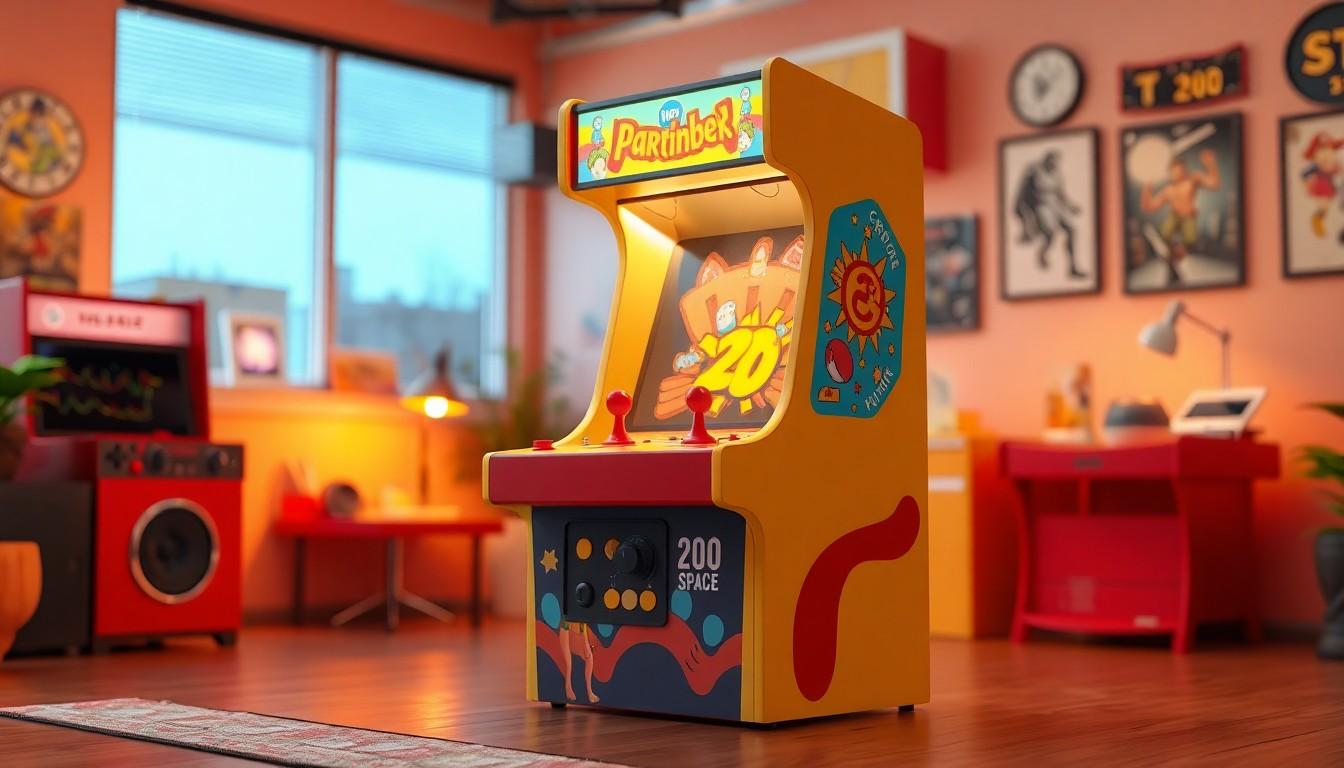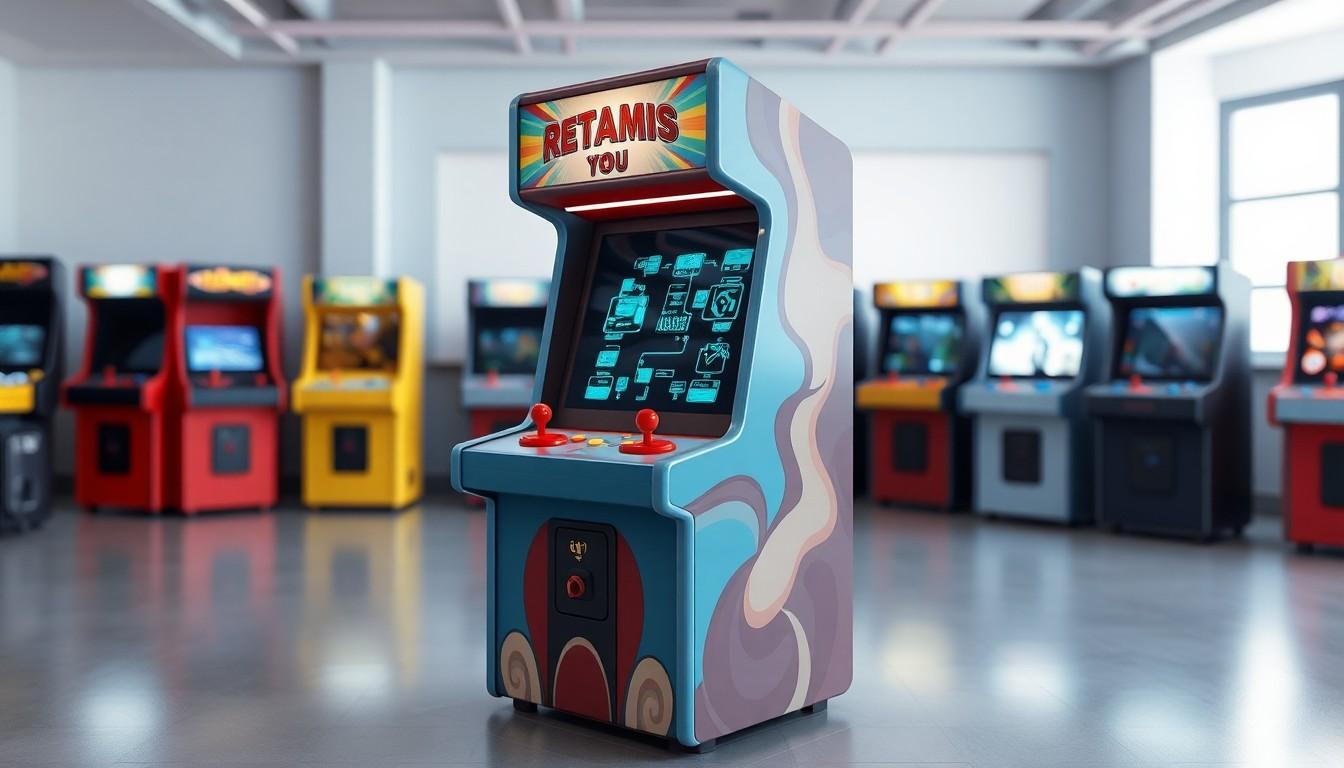Phone:
(701)814-6992
Physical address:
6296 Donnelly Plaza
Ratkeville, Bahamas.

Imagine stepping into a world where nostalgia meets cutting-edge technology. An arcade machine 3D model isn’t just a digital replica; it’s a ticket back to the golden age of gaming, complete with pixelated adventures and the sweet sound of coins clinking. Whether you’re a game developer, a designer, or just a fan of retro vibes, this 3D model can transform your creative projects from drab to fab faster than you can say “high score.”
Arcade machine 3D models capture the essence of classic gaming while integrating contemporary design elements. These models play a vital role in recreating the charm and excitement of retro games.
An arcade machine 3D model represents a digital recreation of classic gaming cabinets. These models serve multiple purposes, including visualizing the design for art projects, game development, or digital collections. Designers and developers utilize these models to evoke emotions tied to nostalgic gaming experiences. Such representations help in creating immersive environments and enhancing user engagement in various applications.
Gaming development significantly benefits from the incorporation of arcade machine 3D models. They find utility in creating authentic retro-inspired games, attracting nostalgic players. Designers employ these models to create visually appealing environments that resonate with their audience. Educational applications also exist, as students can learn about game design principles through interactive 3D models. Artists often reference arcade machine 3D models for inspiration, exploring unique aesthetic possibilities in their projects.

When selecting an arcade machine 3D model, several key features influence the overall experience. Dimensions and scale, detailing and textures, both play critical roles in achieving authenticity and visual appeal.
Choosing appropriate dimensions ensures a realistic representation of an arcade machine. Models typically range from small-scale versions suitable for mobile applications to large-scale replicas meant for exhibitions. The height usually averages around 5 to 6 feet, mimicking classic arcade machines. A well-scaled model enhances user interaction and effectively invokes nostalgia. Calibration of dimensions facilitates seamless integration into various projects, such as games or virtual environments. Game developers often prioritize accuracy in sizing to create engaging experiences.
Textural quality significantly impacts the overall aesthetic of the arcade machine 3D model. High-resolution textures contribute to a lifelike appearance, making the model visually engaging. From glossy finishes to matte surfaces, varying textures emulate real-world materials. Articulated details, like buttons and joysticks, add depth and realism. Incorporating detailed graphics reflects the intricacies of classic arcade designs. This attention to detail elevates both the user experience and the visual storytelling within a project. Optimal use of textures supports the nostalgic atmosphere sought by developers and designers.
Arcade machine 3D models come in various styles, blending nostalgia with innovative designs. Designers and developers benefit from exploring both classic and modern interpretations.
Classic arcade designs evoke feelings of nostalgia and cater to retro gaming enthusiasts. Iconic shapes like the upright cabinet and cocktail tables stand out in this category. Models often feature vibrant color schemes and vintage artwork reminiscent of the 80s and 90s. Popular examples include models resembling the Pac-Man or Space Invaders cabinets. These designs not only provide aesthetic appeal but also play a crucial role in creating engaging, themed environments. For instance, developers frequently use these classic references to capture the spirit of arcade gaming in projects.
Modern arcade machine 3D models incorporate contemporary design elements while maintaining a nostalgic vibe. Sleeker lines and minimalistic aesthetics characterize these variations. Some models feature touchscreens, LED lighting, or customizable skins, reflecting current technology trends. Popular options include hybrid models that combine classic mechanics with digital interfaces. Designers often utilize these modern interpretations to appeal to a broader audience, blending old and new gaming experiences. Educational applications benefit significantly from these variations by illustrating the evolution of gaming technology in a visually engaging manner.
Creating an arcade machine 3D model requires careful consideration of software and design techniques. Both aspects play a crucial role in achieving an authentic representation.
Use reliable software for creating 3D models. Blender, a free and open-source tool, offers powerful modeling features along with an intuitive interface. Autodesk Maya provides comprehensive tools for advanced modeling, making it easier to add intricate details. Tinkercad serves as a user-friendly option, ideal for beginners looking to get started. Cinema 4D also offers robust capabilities for professional-level designs. Each software option allows for various levels of complexity and artistic expression, catering to different skill sets.
Focus on proportion and scale to achieve realism in your design. Properly sized elements create an authentic look, whether for vintage or modern styles. Utilize high-resolution textures to enhance visual detail and depth in the design. Incorporate vibrant colors synonymous with the arcade era, ensuring that nostalgic elements shine through. Embrace modular construction techniques, allowing for easy adjustments and iterations during the modeling process. Experiment with lighting effects to simulate the ambiance of an arcade, amplifying the overall atmosphere of the 3D model.
The allure of arcade machine 3D models lies in their unique blend of nostalgia and modern design. They not only serve as tools for creative projects but also as gateways to revisiting the golden age of gaming. Whether for game development, educational purposes, or artistic inspiration, these models offer endless possibilities.
By focusing on key features like dimensions, textures, and styles, developers and designers can create immersive experiences that resonate with audiences. The journey from classic designs to contemporary innovations showcases the evolution of gaming and its impact on culture. Embracing these 3D models can elevate projects and spark creativity in ways that celebrate both the past and the future of gaming.